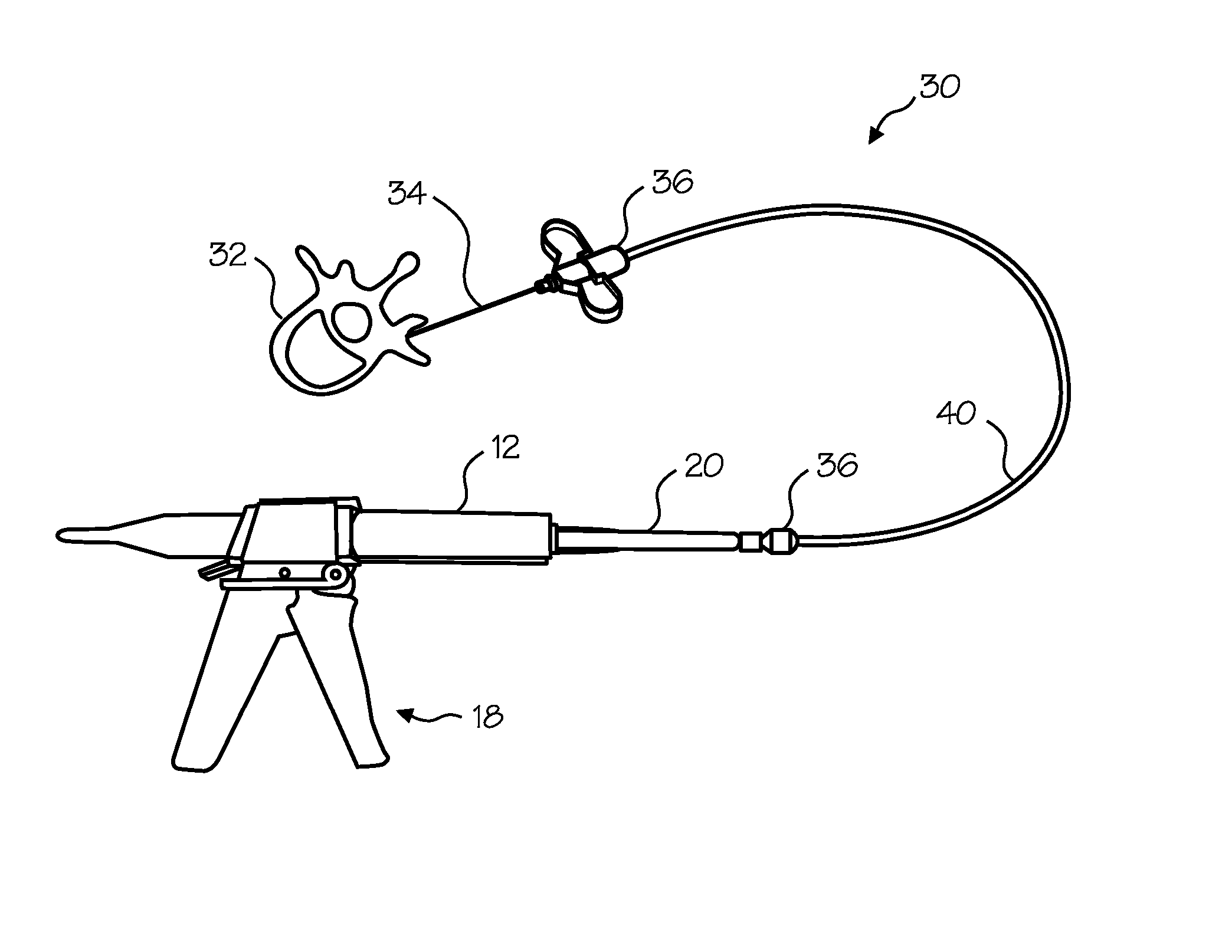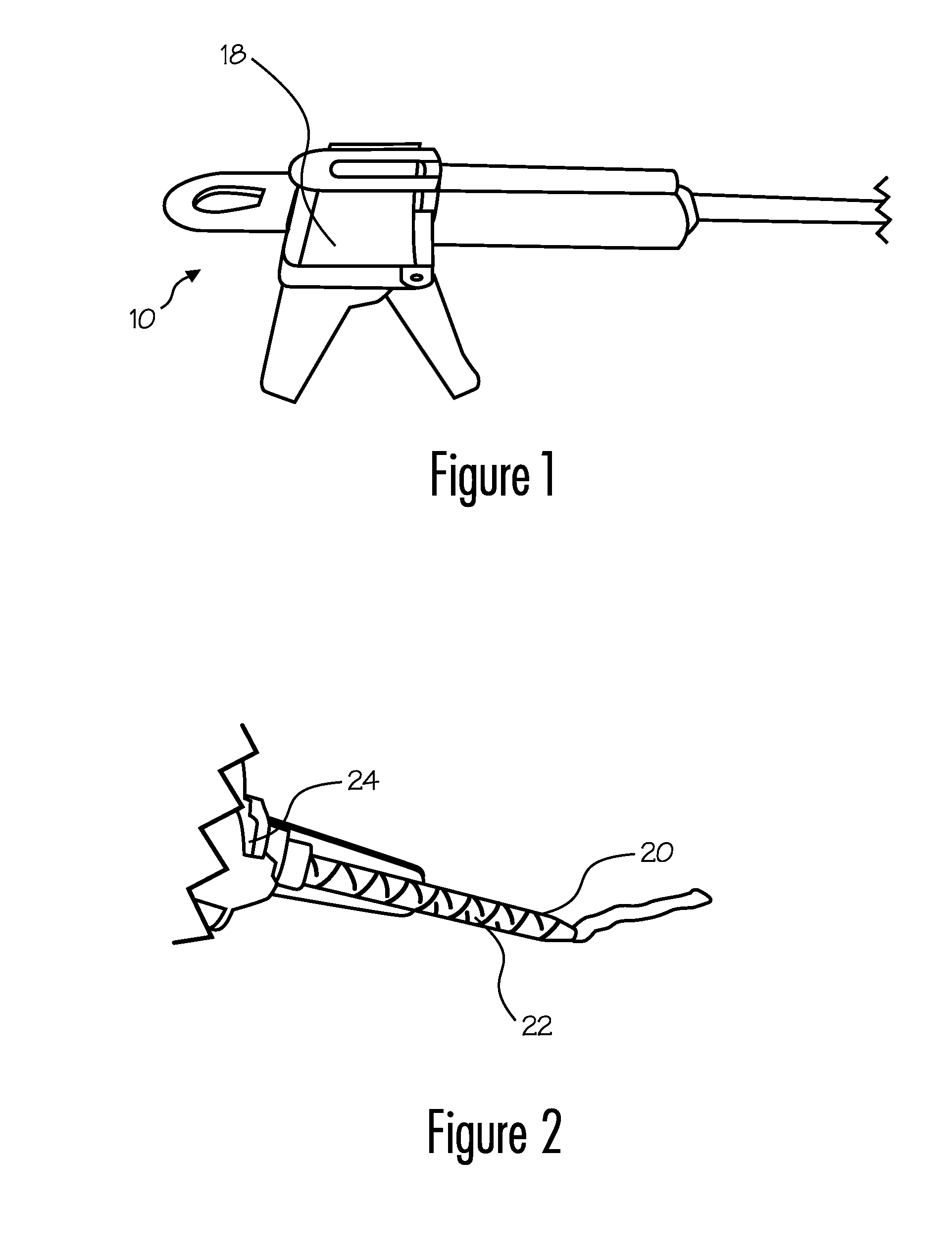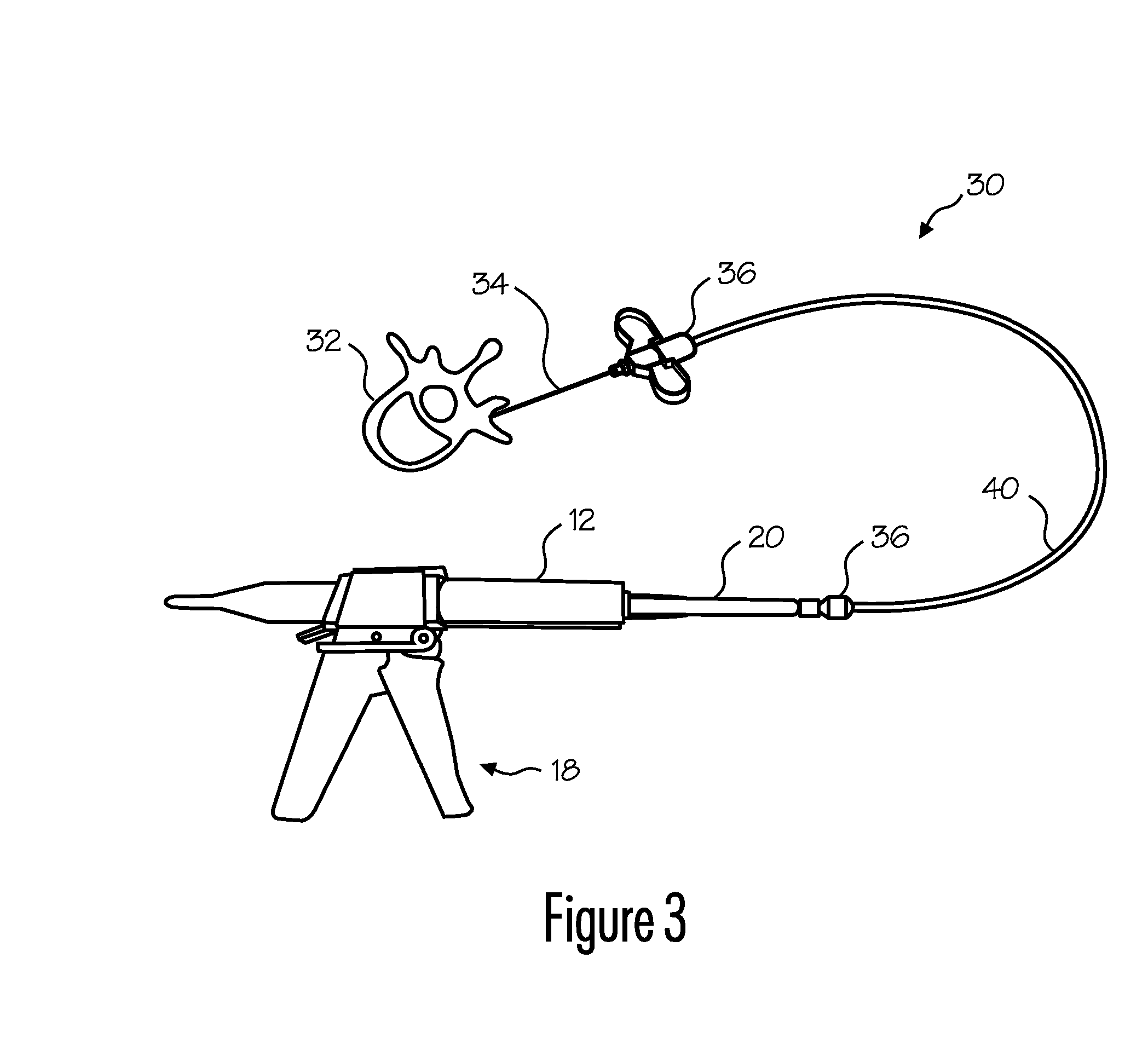Materials and apparatus for in-situ bone repair
a technology for bone repair and bone tissue, applied in the direction of prosthesis, impression caps, other chemical processes, etc., can solve the problems of reducing affecting the quality of life, so as to eliminate the risk of the end user detrimentally altering the ratio, uniform material properties, and uniform components
- Summary
- Abstract
- Description
- Claims
- Application Information
AI Technical Summary
Benefits of technology
Problems solved by technology
Method used
Image
Examples
Embodiment Construction
[0034] One aspect of the present invention relates to injectable compositions that cure in situ and are used in treating and repairing skeletal defects, such as through PVP and / or PKP procedures, to repair damaged vertebrae. Other applications for a composition according to the invention include the filling of bone-voids and repair of intervertebral discs.
[0035] One preferred composition according to the invention comprises two flowable components including: (1) one or more polysiloxanes and one or more catalysts (previously defined as “component A”); and (2) one or more polysiloxanes and one or more cross-linking agents (previously defined as “component B”). The polysiloxanes may be reinforced with an additive such as amorphous silica. The catalyst is most preferably platinum and the cross-linking agent is preferably trimethyl methyl-hydrodimethyl siloxane, although any suitable catalyst(s) or cross-linking agent(s) may be used. The preferred embodiment utilizes a platinum catalys...
PUM
| Property | Measurement | Unit |
|---|---|---|
| weight percent | aaaaa | aaaaa |
| weight percent | aaaaa | aaaaa |
| weight percent | aaaaa | aaaaa |
Abstract
Description
Claims
Application Information
 Login to View More
Login to View More - R&D
- Intellectual Property
- Life Sciences
- Materials
- Tech Scout
- Unparalleled Data Quality
- Higher Quality Content
- 60% Fewer Hallucinations
Browse by: Latest US Patents, China's latest patents, Technical Efficacy Thesaurus, Application Domain, Technology Topic, Popular Technical Reports.
© 2025 PatSnap. All rights reserved.Legal|Privacy policy|Modern Slavery Act Transparency Statement|Sitemap|About US| Contact US: help@patsnap.com



